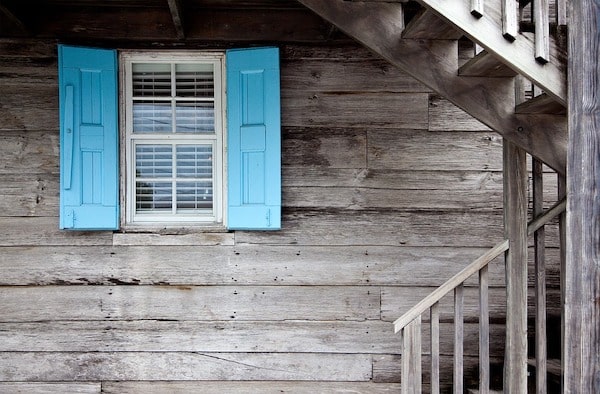Wood is one of the materials that gives more beauty and comfort to a home. However, for many people it seems to be unique heritage of the interior of the houses, being restricted its use for the exterior. In Blues Simon Group we are faithful defenders of its use also abroad, not only because of the beauty it gains as it ages, but because of its sustainable and respectful character with the environment.
The use of wood outside houses, whether as outdoor decking or coatings, can give our house a unique distinction, but we have to take into account various considerations listed below. The first thing we have to consult with the help of a professional is what type of wood is best suited to the climate of the place where we will build our home. Not all woods are equal and, in addition to their durability to external agents such as sun, rain, sudden changes in temperature or humidity, it is very important to know their resistance to one of the biggest problems they face: wood pests and fungi.

Wood types
Although in the market we can find thousands of timber species, among the most used outdoor woods we can highlight:
- Local pine. – Treated in autoclave (injecting a protector in a vacuum chamber), one of the most used.
- Fir tree.- Similar to pine, but with greater stability.
- Chestnut.- High durability
- Larch.- Especially suitable for facade cladding due to its weather resistance.
- Cork oak.- One of the toughest, recommended even for beams, pillars and roof frames.
- Tropical woods such as African iroko, Caribbean balatá, Asian bangkirai or the Guayacán tree. From the perspective of durability, highly recommended; from the perspective of sustainability, not so much for having to import it from so far away.
Occasionally, technical woods are also used, made from sawdust compounds in combination of plastic elements. Although there are already products made from recycled plastic and in proportions that do not exceed 30% -40% of the total composition (the rest being wood), it is not the most ecological option.
Construction techniques
Once the best wood for our construction has been selected, it is also important not to fall into common mistakes that may expose our home to unnecessary risks. One of them is that the wood coverings reach the floor: the only thing that we will achieve is that over time the humidity ascends through the boards and ends up ruining the facade.
In addition, this increase in humidity promotes the appearance of fungi and insects. The most recommended constant humidity reference for exterior wood is 18% and, never lowers than 14%.
Wood maintenance,
If we want to prolong the durability of our constructions it is important to carry out a correct maintenance of the wood. Fortunately, it is already possible to find protectors for this type of material that are not toxic. It does not seem to make much sense to opt for wood for a matter of sustainability and then cover it with toxic substances.
One of the most natural alternatives is to resort to heat treated wood. This technique consists of subjecting the wood to temperatures that move in the fork 180-260 ° C, thanks to which the humidity is reduced and it becomes more resistant to xylophagous fungi. The drawback that it brings is that it reduces the possibilities of using the wood, since these high temperatures reduce the mechanical resistance and prevent it from being used in beams and structural posts.
Another environmentally friendly technique is acetylation. It is a chemical process by which the hydroxyl molecules of the wood are transformed into acetyl molecules, which gives it greater protection against moisture, with durability increases of up to 25%.The benefits of this technique extend to the durability of the paint, whose useful life goes from the usual five years to 15. Likewise and for some years now, the use of varnishes coating is being replaced in favor of the so-called Lasur, whose open pore finish, allows the wood to breathe and self-regulate moisture levels.







Leave A Comment